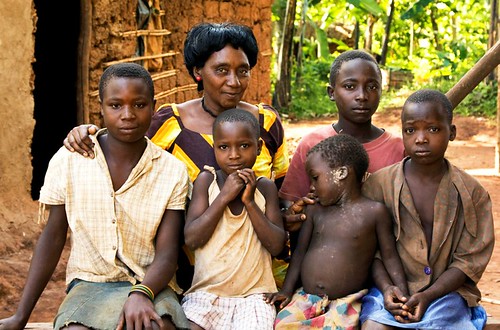The fourth grade class was the next I presented to the day I went to my sister’s elementary school. Paired with Beatrice, the children had sent dozens of heartfelt correspondence to my 10 year old. Here are a few of my favorites from the second set of letters (the first set can be found here):
Dear Beatrice,
Happy Valentine’s Day! It has been a long time since writing a letter. Valentine’s Day is something we celebrate of love and kisses. I wanted to write/say how are you doing? Oh, and what are 20,000 shilips [shillings]. By the way how is Uganda? Beatrice you are a fun person to write to. I hope you study. Again, Happy Valentine’s Day.
Your Friend,
Emily Peralta
Dear Beatrice,
My name is Joseph. I would like to ask you questions about you. What is your favorite food? What is your favorite sport? What do you do with your family? How many brothers and sisters do you have? I have two brothers. One has twelve the other one has three. The little one bothers me too much. The big one always plays. I am a terrific student.
Sincerely,
Joseph Castro
Dear Beatrice,
How are you? I am fine. Today was rainy here. Was it good in Uganda? I think we will be good friends. Is your country grassy or sandy? I want to know about you and your country. I am an only child. Are you too? I like to go outside. Do you? What are some of your traditions? What is the name of the language you speak? What remedies are there in Uganda? Are the flowers pretty? Do you think we will be friends? What do you like?
I hope you write back.
Sincerely,
Anthony
Dear Beatrice,
Hi how are you Beatrice? I’m fine. I am so happy writing to you. I was wondering of a song you told me about. I think it is bread in butter. I have two questions for you. What is your favorite food? Also, if you like animals. I love animals. I was wondering if you could send me a picture of the animals in Africa. I hope you write back.
Your Friend,
Jasmine
I began the presentation by giving each of the children Beatrice’s replies. They stared wide-eyed at the papers, leaning over each other comparing answers. Then I played the video on everyday Ugandan life, and like in the second grade class, the children discussed their impressions afterwards, little voices telling me they noticed Ugandan children had to fetch water, didn’t have desks in school, played with trash because they had no toys and ate food they grew in the gardens. I made it a point to explain during the slide show when a picture appeared of children leaning to the ground cleaning a school hall with rags that there were no janitors at Ugandan schools. I heard a room full of gasps...especially from the teachers. How would you like to go out and clean the halls now? The teachers gruffed to their children.
I then passed around jewelry from Uganda, explaining that some of the beads were made of paper, which women painstakingly rolled, dyed and varnished. I showed them the wallet made of bark and the earrings made of reed. We talked about the clothes Ugandans wore. I explained they either draped themselves in traditional African cloth with vivid patterns, or more commonly, put on Western shirts and pants. I glanced around at nicely dressed children behind wide white desks.
“What do you do with your clothes when you don’t want them anymore?” I asked.
“We give them to charity.”
“Right. And do you know what happens to many of the clothes you donate to charity?” The kids looked at me expressionlessly. “They get sent to Africa.” I paused letting it sink in. “And guess what? Africans have to buy them – usually at open markets where the clothes are piled on the ground. They don’t pay much, maybe 25 or 50 cents for a shirt, but for them sometimes that’s a lot of money. You might even see a T-shirt from this elementary school in Africa.” I pointed to a girl in a bright pink and sunshine flowered shirt. “Someday you may get tired of that nice shirt or too big for it, and you’ll give it to charity and a girl in Africa might end up wearing it.” The kids all looked down at their clothes.
I couldn’t speak for long; my presentation was limited to about fifteen minutes, but I knew how it would end.
“Jasmine. Which one of you is Jasmine?” A round faced girl in the corner giggled and raised her hand. “Beatrice told you in her first letter she wanted to sing you a song called Bread and Butter. Do you remember?” Her brown mane flopped up and down. I turned to the rest of the class to explain. “The song is about friendship, how friends go together like bread and butter. Beatrice liked having Jasmine and all of you as friends and wanted to show it.” I turned back to Jasmine. “Before I left Uganda, I recorded Beatrice singing the song so you and the rest of the class could hear it.”
A hushed anticipation swept across the little crowd. Then Beatrice’s sweet voice filled the room.
Cyber Warfare Is Getting Real: The risk of escalation from cyberattacks has
never been greater—or the pursuit of peace more complicated
-
My piece in Wired
The post Cyber Warfare Is Getting Real: The risk of escalation from
cyberattacks has never been greater—or the pursuit of peace more co...
3 years ago







Too precious!
ReplyDelete-h